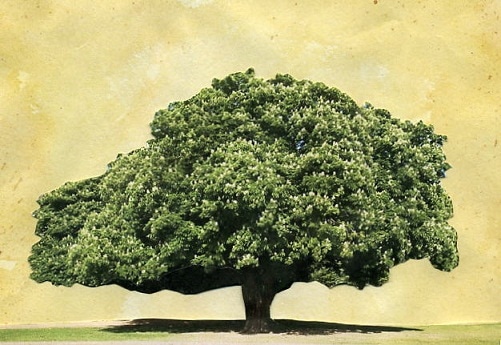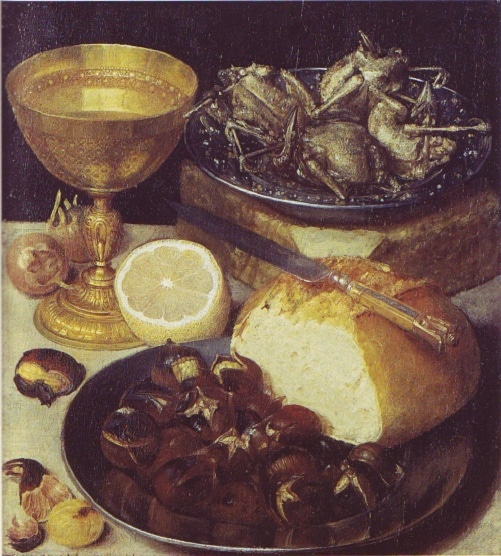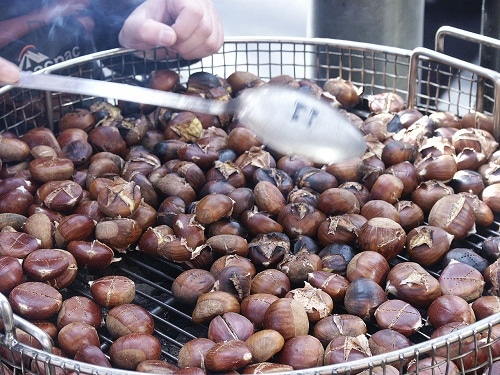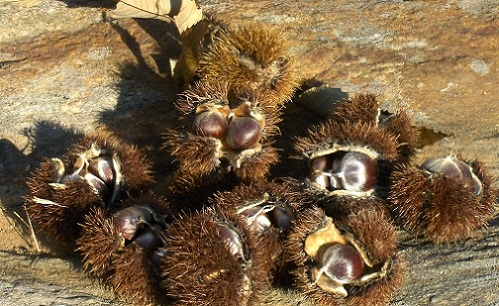|
Long before the great western plains of the U.S, were waving in wheat, there were heavily forested areas, many mountainous, of “bread” trees. It was once said that a squirrel could travel from New York to Georgia leaping from branch to branch of the mighty American Chestnut tree without ever touching the ground. Likewise, this marvelously spreading tree populated huge swathes of the northern hemisphere across Europe and Asia where it provided shade and sustenance for many more than the village smithy. Its hardwood was cherished for producing delicately sonorous musical instruments, fine furniture, elegant paneling, practical shingles, railroad ties and telegraph poles. Its tannins were prized for curing leather. More than all else, it was a primary food staple in North America, Europe and Asian. Chestnuts have been boiled, roasted, toasted and milled for flour across these continents for millennia. As in other paradises, our chestnut Eden took a critical downward turn when, in 1904, a diseased Asian Chestnut was planted on Long Island N.Y. instigating a continent-wide blight that nearly obliterated the American Chestnut tree. Only a few groves in California and the Pacific Northwest survived. Extensive and successful efforts are underway to propagate and restore the American Chestnut tree. Apparently just in time. The flour ground from chestnuts is on its way to becoming a deliciously flavorsome bakery staple. And it’s gluten free. As sung by Nat King Cole, chestnuts have become an integral element in our collective Christmas rituals and memories. Most of us, I suspect are more likely to roast them in an oven rather than an open fire. Though there are considerably fewer opportunities, one can still pick up the scent of roasting chestnuts from food carts on a New York City street corner. Let’s not forget the chestnut contribution to turkey stuffing. Chestnuts have the ability to straddle the lines between sweet and savory dishes; to move seamlessly between a street corner snack and an elegantly toothsome dessert. The sinfully French, sweetened Chestnut Purée has layered and crowned many a confection. Some sinners have been known to simply spoon it into their mouths from the jar. We offer three recipes this week. Two past recipes are on our website for a Crustless Chestnut Pie and a sweetened Chestnut Purée. For the first time here is Chestnut Chocolate Cake made with chestnut flour and a layer of chestnut purée. Immediately below are four internet videos with a few tricks for chestnut roasting and shelling:
https://www.youtube.com/watch?v=Vm6_P4_KJT4 http://www.bing.com/videos/search?q=shelling+chestnut+video+&view=detail&mid=4830298A72BDA40E83DA4830298A72BDA40E83DA&FORM=VIRE http://www.bing.com/videos/search?q=shelling+chestnut+video+&view=detail&mid=C2383BE44B2242AA5E2BC2383BE44B2242AA5E2B&FORM=VIRE http://www.bing.com/videos/search?q=shelling+chestnut+video+&&view=detail&mid=492F34C154220ECCB4C1492F34C154220ECCB4C1&rvsmid=C2383BE44B2242AA5E2BC2383BE44B2242AA5E2B&fsscr=0&FORM=VDQVAP All you need is a fire blazing in the fireplace. Merry Christmas!
0 Comments
Leave a Reply. |




